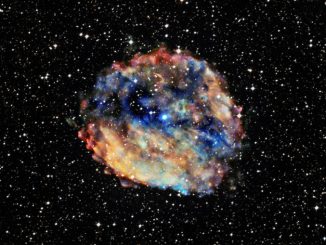
Norma


Young magnetar likely slowest pulsar ever detected
Using X-ray observatories, astronomers have found evidence for what is likely one of the most extreme pulsars, or rotating neutron stars, ever detected. The source exhibits properties of a highly magnetised neutron star, or magnetar, yet its deduced spin period of 6⅔ hours is thousands of times longer than any pulsar ever observed.

The realm of buried giants
In this huge image of part of the southern constellation of Norma, wisps of crimson gas are illuminated by rare, massive stars that have only recently ignited and are still buried deep in thick dust clouds. The vast nebula where these giants were born, known as RCW 106, is captured here in fine detail by ESO’s VLT Survey Telescope (VST), at the Paranal Observatory in Chile.
